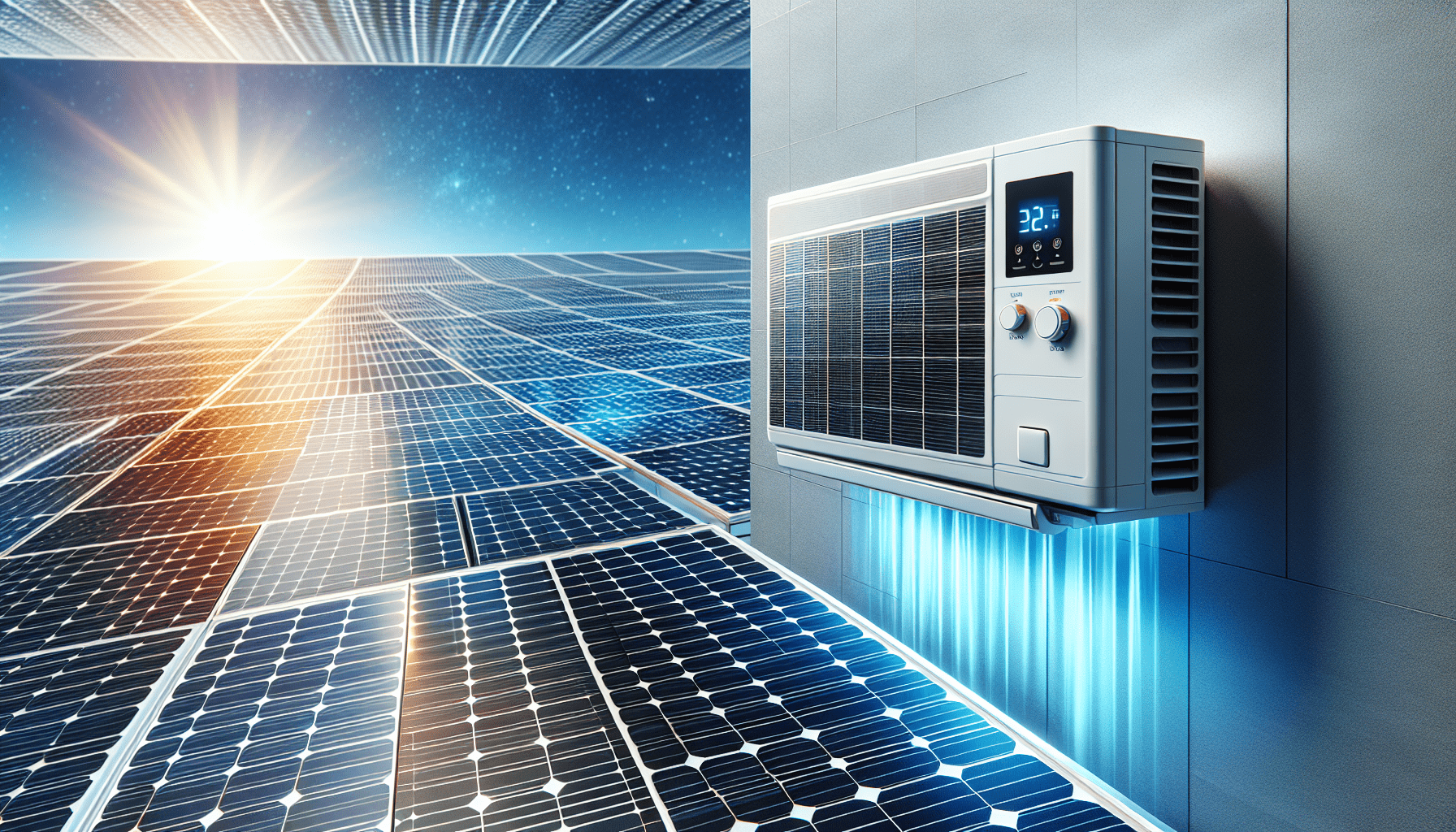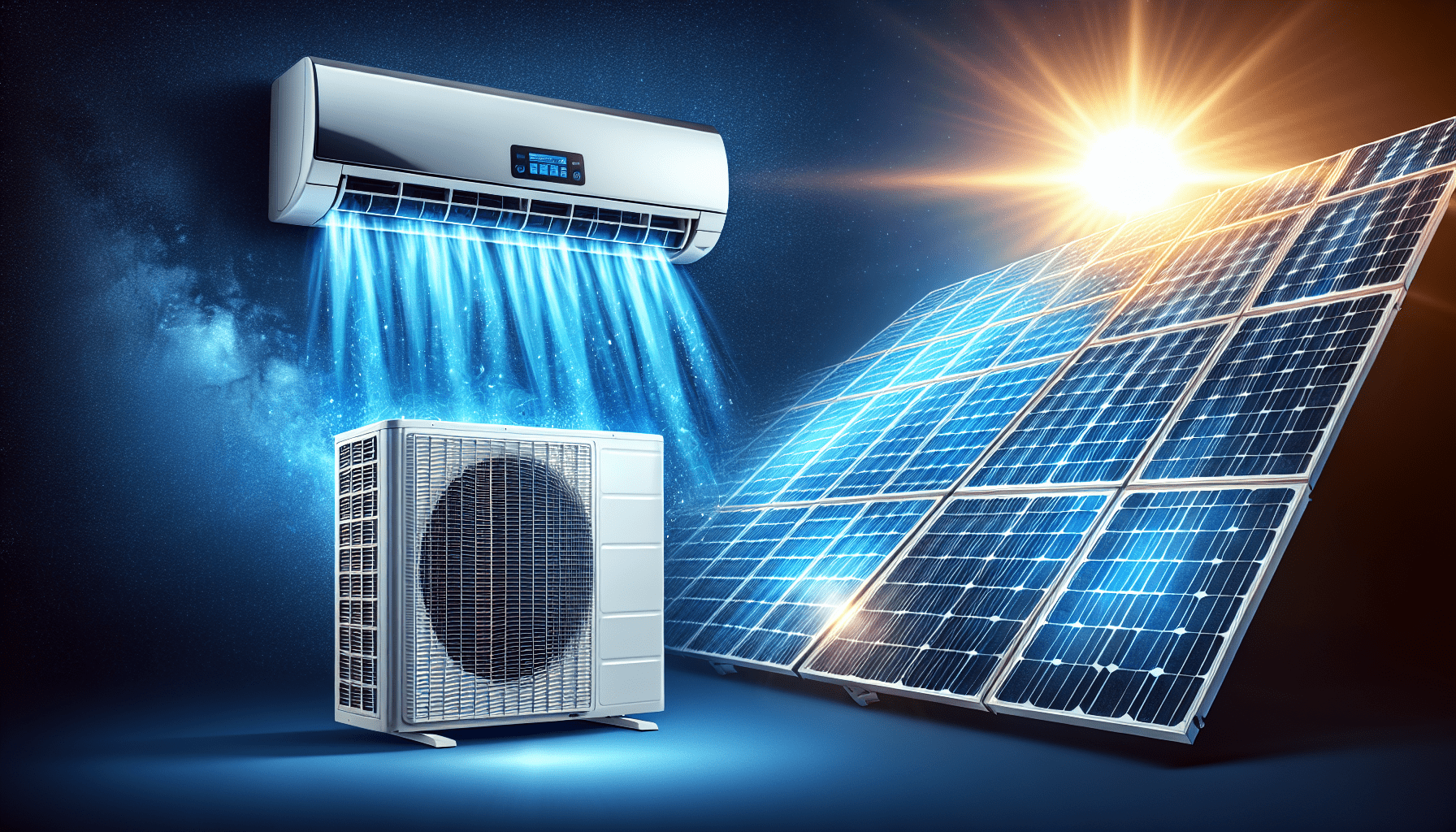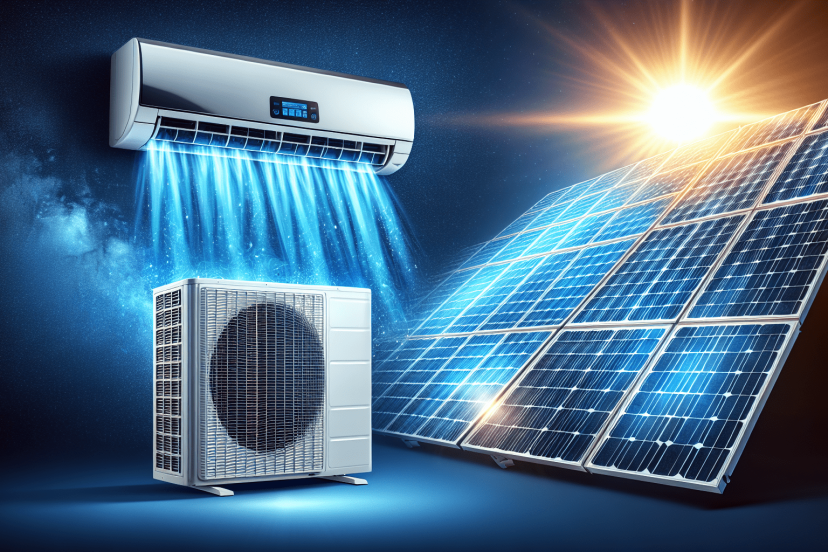Efficiency of Split AC with Solar Power Systems
As an Amazon Associate, I earn from qualifying purchases, at no additional cost to you. Disclaimer
Have you ever wondered how you could keep your home cool while also saving on energy costs and reducing your carbon footprint? It’s a common challenge, especially as energy demands increase during the warmer months. With technological advances, it’s now feasible to operate your air conditioning systems efficiently using solar power. This move not only mitigates energy consumption but also supports a more sustainable planet. Let’s delve into the topic of the efficiency of split air conditioners (AC) with solar power systems, which might just be the solution you’ve been looking for.

Click Here to Solar Power Your Life
Understanding Split Air Conditioners
To appreciate the integration of solar power with split air conditioners, it’s crucial to first understand how split AC units function. Split AC systems are one of the most commonly used cooling solutions today, mainly due to their efficiency and convenience.
What is a Split Air Conditioner?
A split air conditioner consists of two main parts: an indoor unit and an outdoor unit. The indoor unit is installed inside your room, while the outdoor unit is placed outside the house. The two units are connected via pipes, which carry refrigerant gas to facilitate cooling. This setup allows for quieter and more efficient operation than traditional window units.
Components of a Split Air Conditioner
Each part of a split AC plays a specific role in maintaining a comfortable indoor environment. The indoor unit contains the evaporator coil, blower fan, and an air filter, all essential for drawing warm air from a room and releasing cool air back into it. The outdoor unit houses the compressor, condenser coil, and expansion valve, which are crucial for refrigerant circulation and heat exchange. Understanding these components will better equip you to see how solar power can enhance their efficiency.
Benefits of Split Air Conditioners
Split ACs are known for several advantages. They offer zoned cooling, meaning you can cool specific areas of your home, reducing unnecessary energy usage. They’re also relatively easy to install, operate quietly, and have a sleek design that doesn’t disrupt your interior decor. But perhaps most importantly in the context of this discussion, they can be adapted to run on solar power, enhancing their efficiency and sustainability.
Introduction to Solar Power Systems
Now that you have a grasp on split air conditioners, let’s understand how solar power systems operate. Solar power is a renewable energy source harnessed from sunlight, and it’s increasingly becoming a popular choice for homeowners looking to reduce their energy bills and environmental impact.
How Solar Power Systems Work
A solar power system consists of solar panels, an inverter, a battery storage unit, and an electricity meter. The solar panels capture sunlight and convert it to direct current (DC) electricity. The inverter then changes this DC into alternating current (AC) electricity, which can be used to power household appliances, including air conditioners. If there’s excess energy, it’s stored in batteries or fed back into the grid.
Types of Solar Panels
The efficiency of your solar-powered AC system will largely depend on the type of solar panels you choose. The three most common types are monocrystalline, polycrystalline, and thin-film solar panels. Monocrystalline panels are known for their high efficiency and durability; polycrystalline panels offer a balance between performance and cost; and thin-film panels provide flexibility and are easier to install on varied surfaces.
Benefits of Solar Power Systems
Solar power systems bring numerous benefits. They can significantly reduce your electricity bills and are environmentally friendly, reducing your reliance on fossil fuels. Furthermore, utilizing solar energy protects you from electricity cost fluctuations and potential power outages, giving you greater control over your energy usage.
Click Here to Reduce Your Energy Bills with Solar
Integration of Split ACs with Solar Power
Combining your split AC with a solar power system could dramatically transform your home energy management. The integration of these technologies requires proper planning and implementation but offers substantial rewards in energy efficiency.
Why Use Solar Power for Split ACs?
Traditional air conditioning systems can be energy-intensive, accounting for a significant portion of your electricity bill. By powering your split AC with solar energy, you harness an abundant, renewable energy source to cool your home. This not only saves on costs but also lessens the environmental impact of your household energy consumption.
Components Needed for Integration
To successfully integrate your split AC with a solar power system, you will need solar panels, an inverter capable of handling enough power to run your AC unit(s), a battery system to store excess energy, and a compatible charge controller. These components ensure that your system operates efficiently and reliably across varying conditions.
Challenges and Considerations
While the integration offers substantial benefits, it’s not without challenges. The initial cost of installation can be high, although offset by long-term savings. Weather conditions can also impact solar panel efficiency, potentially limiting performance on cloudy or rainy days. It’s important to consider these factors and consult with a solar energy specialist to properly size and install your system.
Calculating the Efficiency of Solar-Powered Split ACs
Understanding the efficiency of your combined system is key to maximizing its benefits. Efficiency relates to how effectively your AC uses solar energy to provide cooling.
Factors Affecting Efficiency
Several factors can affect the efficiency of a solar-powered split AC system. These include the solar panel type and orientation, inverter efficiency, and the operating conditions of your AC unit, such as room insulation and the outside temperature. Ensuring optimal conditions for each component maximizes your system’s overall performance.
How to Calculate Efficiency
Calculating the efficiency of a solar-powered AC system involves examining the energy input from the solar panels against the energy output required to run the AC. An efficiency formula you might use is:
Efficiency (%) = (Energy Output from AC / Energy Input from Solar Panels) x 100 Real-World Performance
In practice, the efficiency of solar-powered AC systems can vary. Ideally, your system should cover the full energy usage of your split AC during peak sunlight hours. However, performance can drop during overcast weather or if your solar panel’s angle isn’t optimal. Monitoring your system’s real-world performance helps identify areas for improvement.

Click Here to Go Green and Go Solar
Financial and Environmental Implications
Investing in a solar-powered cooling solution can have significant financial and environmental benefits, making it a worthwhile consideration for many homeowners.
Cost Savings
While the upfront cost can be substantial, over time, a solar-powered AC system will reduce your energy bills significantly. With rising electricity costs, this can equate to substantial savings annually, helping you recoup your initial investment in just a few years.
Environmental Impact
Using solar energy to power your AC dramatically reduces greenhouse gas emissions. According to the U.S. Environmental Protection Agency, using renewable energy sources like solar can mitigate air pollutants and combat climate change, aiding in global efforts towards sustainability.
Incentives and Rebates
Many governments offer incentives and rebates to promote clean energy technologies. By investing in a solar-powered system, you might be eligible for tax credits, rebates, or energy efficiency grants, further reducing your initial costs and enhancing your savings.
Future Prospects and Technological Advancements
The landscape of solar energy and air conditioning is ever-evolving, and staying informed of new developments can help you maximize your system’s efficiency and benefits.
Advances in Solar Technology
Technological advancements in solar power are paving the way for more efficient, cost-effective solutions. Solar panels are becoming more efficient, with some reaching over 22% efficiency. Innovations like bifacial solar panels, which capture sunlight from both sides, promise even higher energy yields.
Smart AC Systems
Smart air conditioning technology is another exciting development. These systems use machine learning and IoT (Internet of Things) connectivity to optimize energy usage based on your lifestyle and weather patterns, further enhancing the efficiency of your solar-powered AC setup.
Emerging Trends
Emerging trends in solar power include solar skins for aesthetic appeal and solar batteries with greater storage capacity. These innovations aim to make solar energy more accessible and versatile for homeowners, allowing you to further enhance your split AC’s efficiency.
Conclusion
Harnessing solar power to operate split air conditioners presents a compelling opportunity to increase energy efficiency, reduce costs, and minimize environmental impact. By understanding the components and workings of both systems, preparing for an initial investment, and keeping abreast of emerging technologies, you can create a sustainable and cost-effective cooling solution for your home. As solar technology continues to advance, opting for a solar-powered AC not only makes financial sense but is a step toward a more sustainable lifestyle. Consideration of this integration may just be the cool, green solution you’ve been seeking.

